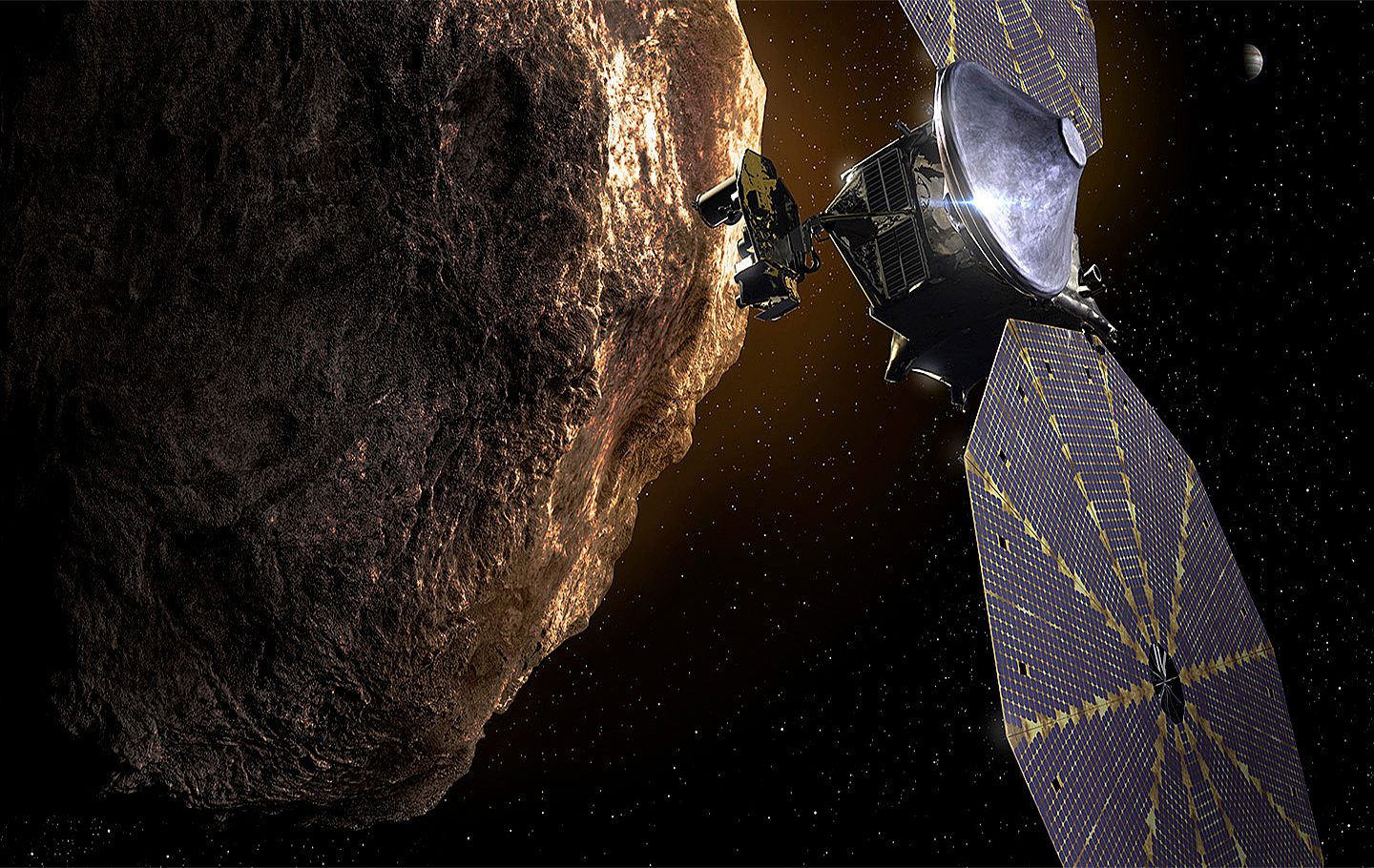NASA’s Lucy mission successfully completed its Critical Design Review on Oct. 18.
During this review, Lucy team members presented the completed mission design, demonstrating that the team has met all the technical challenges of the mission and is ready to begin building hardware. After the review completion, NASA’s independent review board provided a green light for proceeding into the fabrication/manufacturing stage of the mission.
The Lucy Critical Design Review began on Oct. 15 at Lockheed Martin in Littleton, Colorado. This major mission milestone marks the culmination of months of reviews of all of the mission systems and subsystems. Over four days, the independent review board, comprised of reviewers from NASA and several external organizations, heard presentations on all aspects of the mission design. All aspects of the mission were addressed, including the Lucy spacecraft and its instrument payload, system-level test plans for flight hardware and software, systems engineering, mission assurance, the ground system, and science.
Credits: NASA’s Goddard Space Flight Center
This video is public domain and can be downloaded from the Scientific Visualization Studio
“This is a very exciting time for us because we are moving beyond the design phase and a really starting to build the spacecraft, said Hal Levison, Lucy principal investigator from Southwest Research Institute in Boulder, Colorado. “It is finally becoming real!”
Critical Design Reviews are one-time programmatic events that bridge the design and manufacturing stages of a project. A successful review means that the design is validated and will meet its requirements, is backed up with solid analysis and documentation, and has been demonstrated to be safe.
Lucy will be the first space mission to study the Trojan asteroids, which orbit the Sun at a distance of Jupiter. The mission will launch in October 2021. With boosts from Earth’s gravity, the spacecraft will complete a 12-year journey to seven different asteroids — a Main Belt asteroid and six Trojan asteroids.
“I am constantly amazed at the dedication and diversity of skills that our team brings to this project,” said Keith Noll, Lucy project scientist from NASA’s Goddard Space Flight Center in Greenbelt, Maryland. ”Day by day the mission comes into clearer focus and the mission critical design review is the latest milestone in our journey to launch just two years from now.”
Southwest Research Institute (SwRI) in Boulder, Colorado is the principal investigator institution and will lead the science investigation. NASA’s Goddard Space Flight Center, Greenbelt, Maryland will provide overall mission management, systems engineering, and safety and mission assurance. Lockheed Martin Space Systems in Denver, Colorado will build the spacecraft.
Discovery Program class missions like Lucy are relatively low-cost; their development is capped at about $450 million. They are managed for NASA’s Planetary Science Division by the Planetary Missions Program Office at Marshall Space Flight Center in Huntsville, Alabama. The missions are led by a principal investigator, who assembles a team of scientists and engineers to design and conduct the mission to address key science questions about the Solar System.
For more information about the Lucy mission, visit:
or
By Nancy Neal Jones
NASA’s Goddard Space Flight Center in Greenbelt, Md.



























